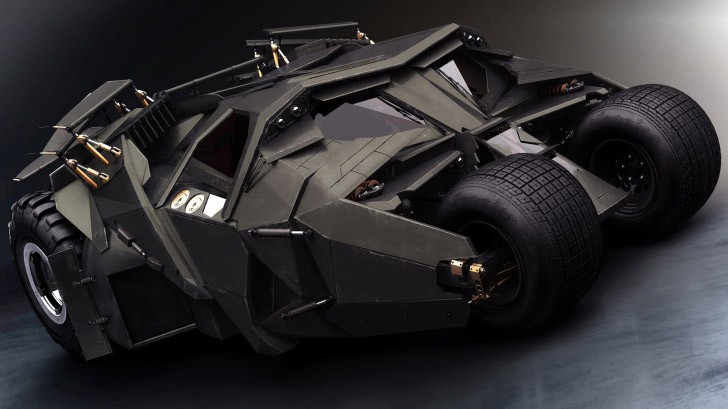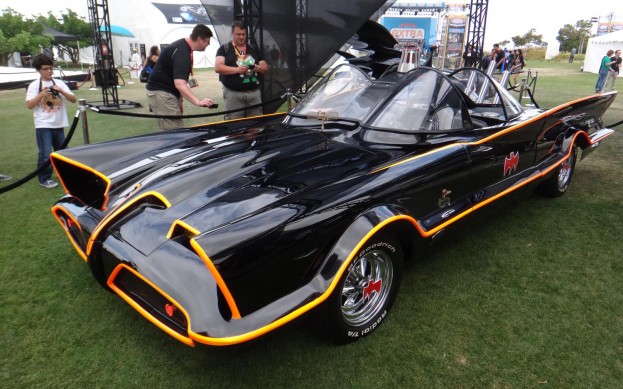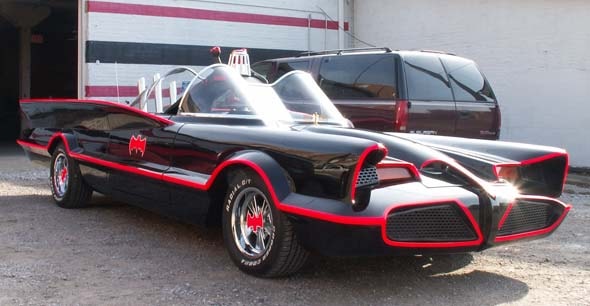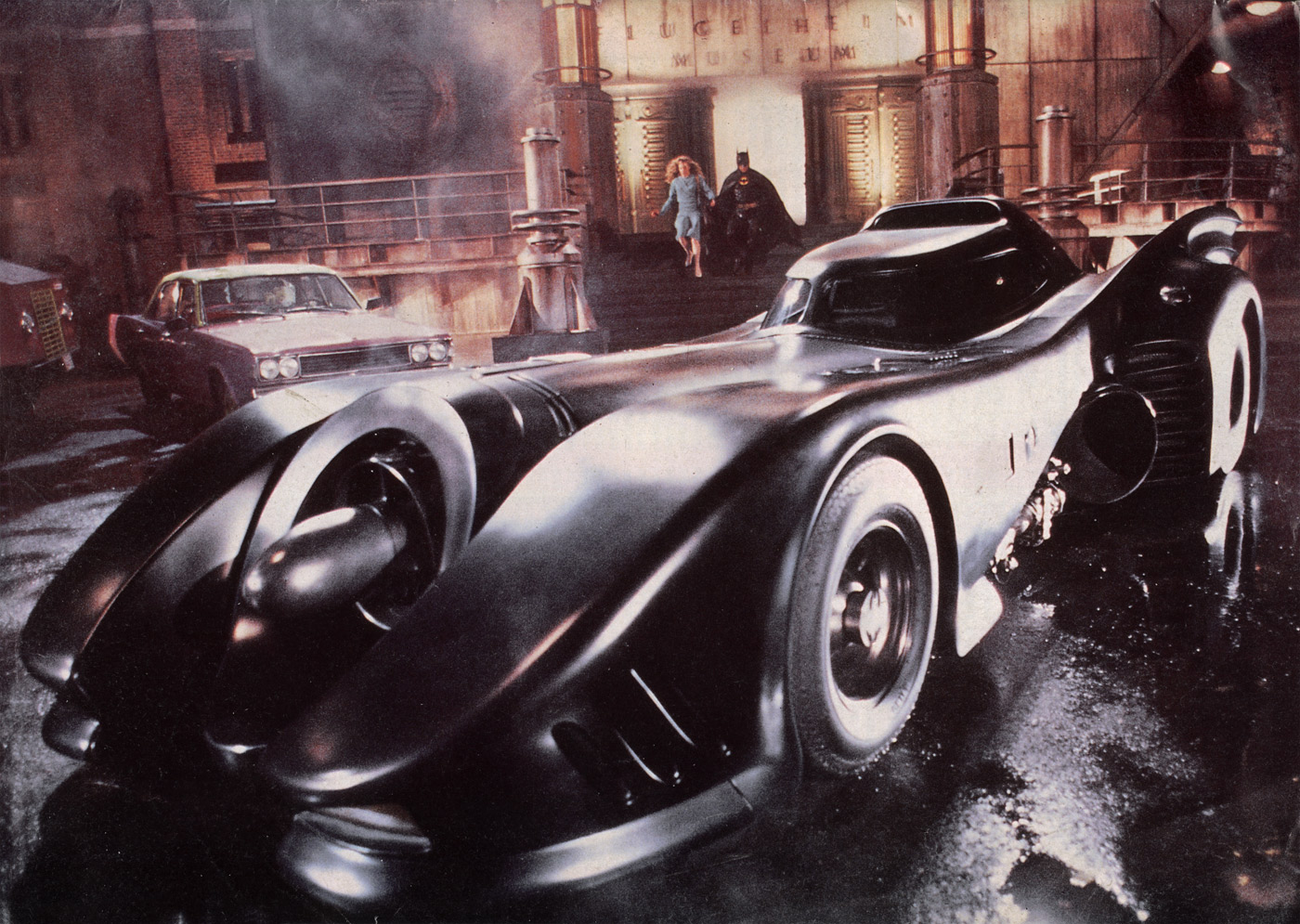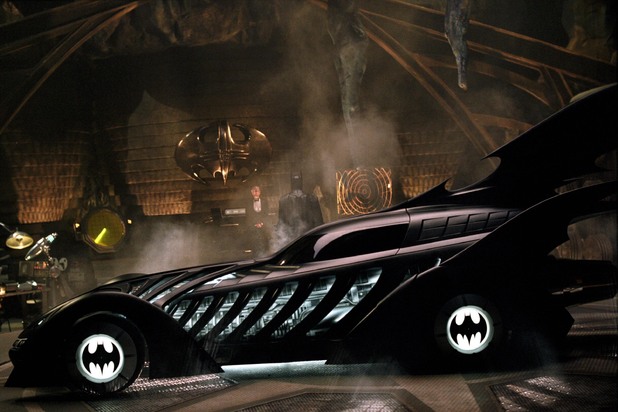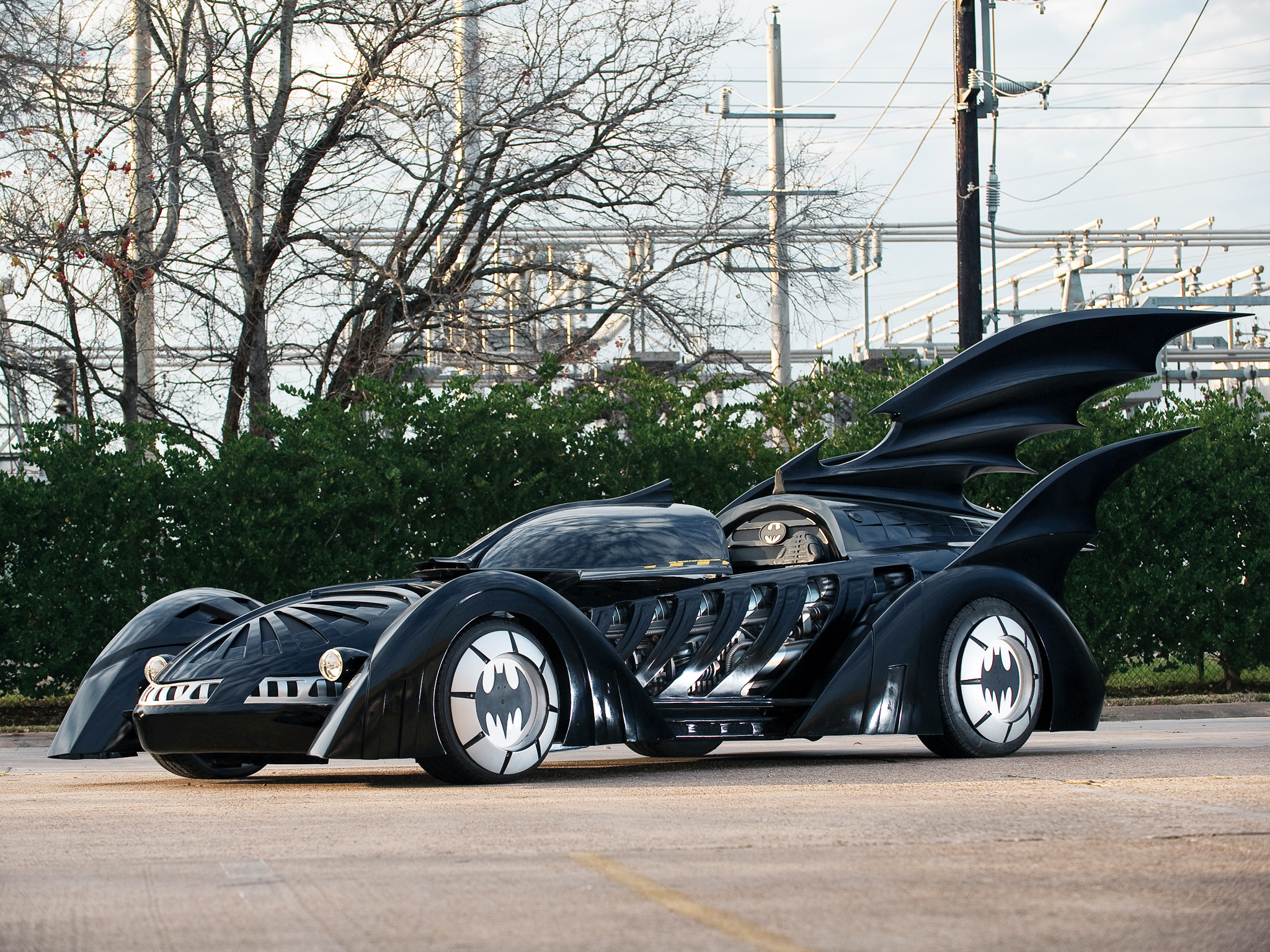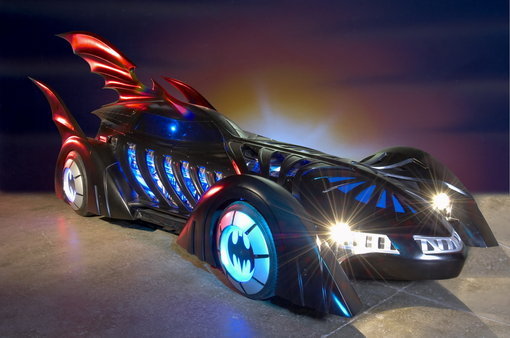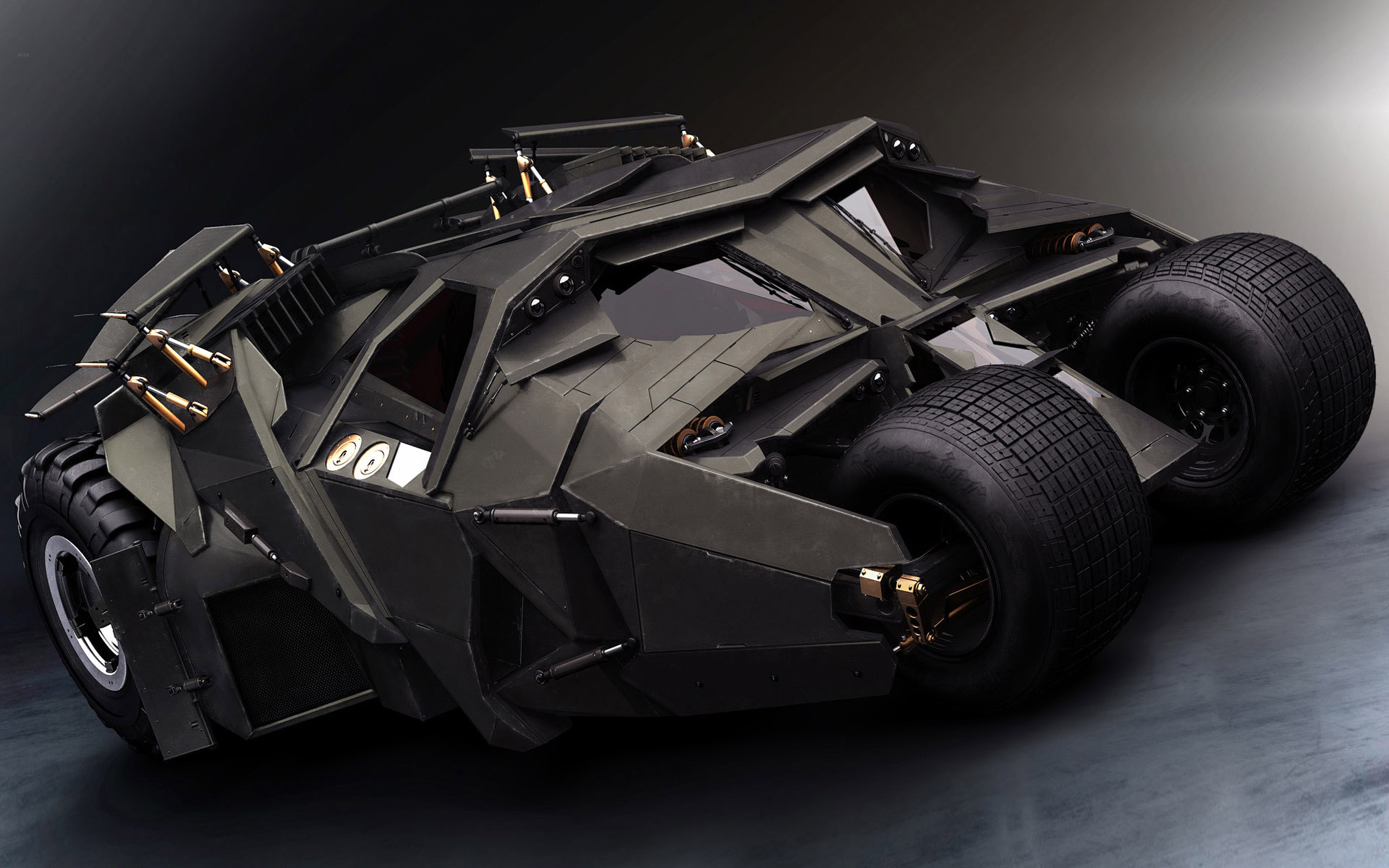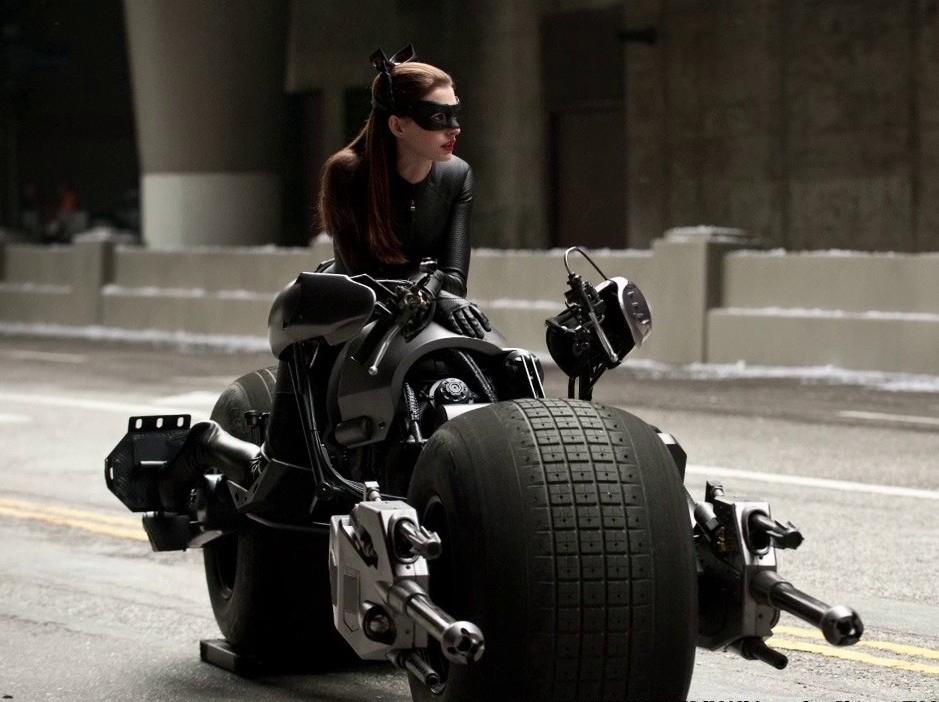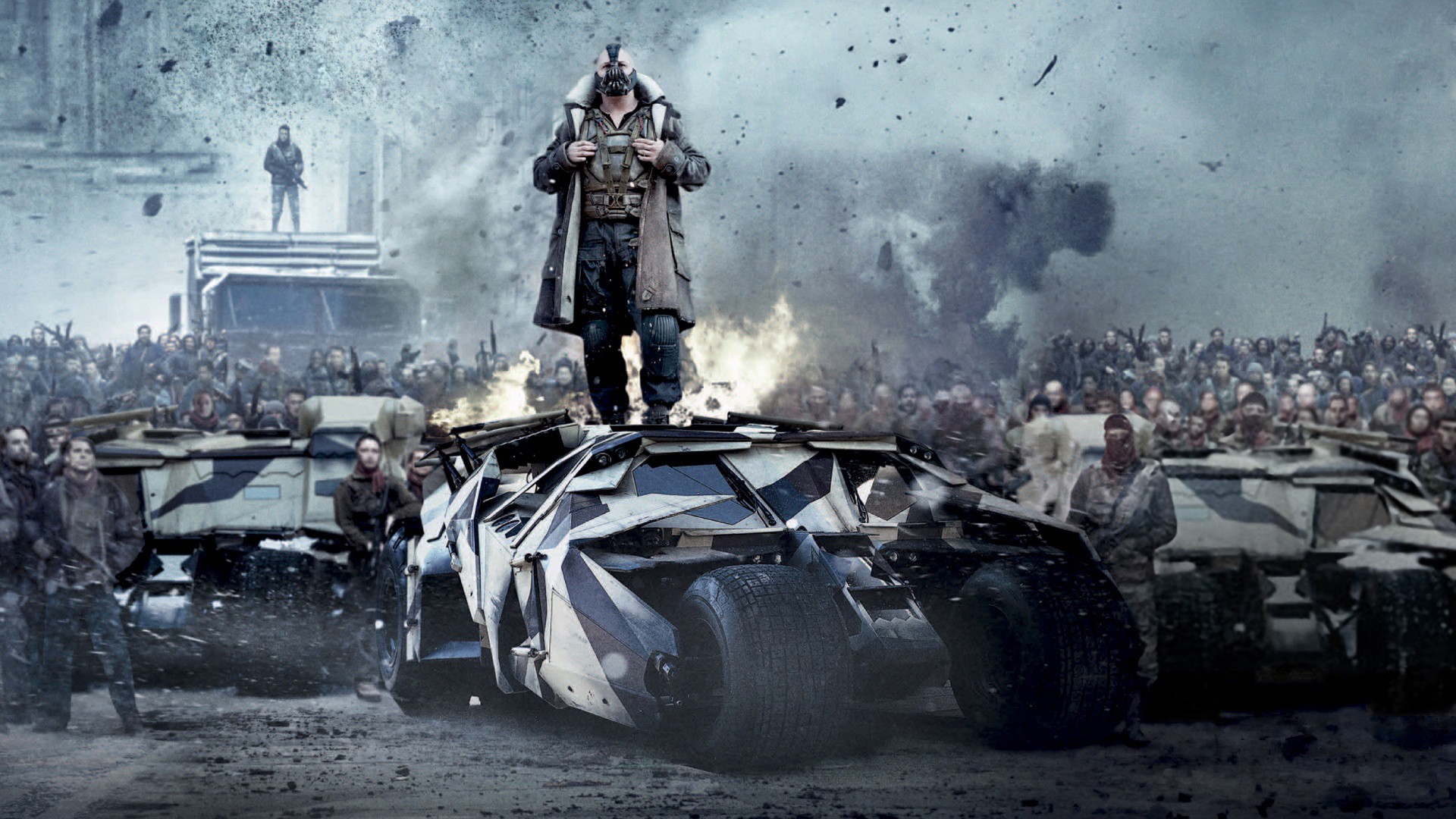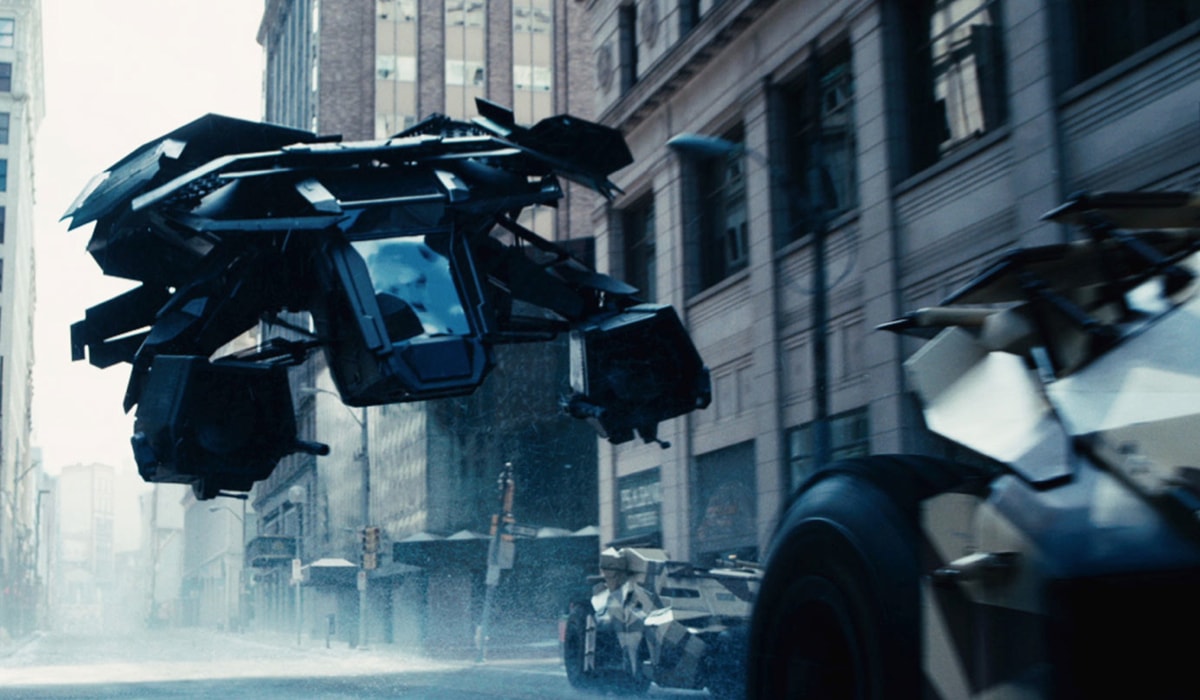Automobiles were designed because of man’s need for transportation. Engines, connected to gearboxes, connected to drive shafts and finally to the wheels with very a very simple goal: to get you from point A to point B. Yet they can be so much more!
Just look at a 5-year old child’s doodles and you’ll realize that from a very young age, we’re drawn to the automobile. It fascinates us, sometimes motivates us to do bad things, it inspires us but also scares us in a primeval way.
The young imagine them as something they’re not, something better and more powerful, like a flying machine, a giant robot, a time traveling device or a gun platform. Hollywood has taken advantage of this, but one movie car stands above all others, the Batmobile.
It’s got a jet burner, weapons and armor. Batman is just an ordinary man with a cape, he can’t leap or fly. You simply can not imagine Batman without the Batmobile. A kid will always look at this mythical machine and think to himself: “wow, if I had a Batmobile, I could do anything I wanted.”
The TV Era
The ‘66 is the classic Batmobile, the crime fighting equivalent of the Pontiac GTO. The whole point of that front end is to be a battering ram, because the Batman of this era value good driving skills over six pack abs and martial arts learnt in Tibet. It has a direct link to the cave, is atomic powered and can be driven from the passenger seat.
Built by legendary car customizer George Barris, this Batmobile appeared in TV series that aired between 1966 and 1968, 120 episodes of butt kicking, crime fighting action. The TV series car actually started life ten years before as the Lincoln Futura concept, designed by Ford and built in Italy by Ghia Body Works. But it was converted in a matter of weeks and painted in the now famous black with cherry red accents.
In those days, there were no computer generated special effects, so every feature on the car had to be real. But all the crime fighting gadgets were a bit silly, named with humor: the Batphone, the Emergency Bat-turn Lever, the Batray, the Bat Beam and best of all, the Bat-tering Ram. No, we’re not making this stuff up!
The TV series car doesn’t have the menacing look of the Tumbler, but it started several trends, like the use of a rear-mounted turbine / thruster, while cementing Batman’s reputation as the hero with the futuristic toys. Also, the parachutes on the back were from a real dragster, which means some of the stunts they pulled were quite dangerous.
Batmobile and Batmobile Returns
Arguably the most comicbook-like Hollywood version of the Batmobile came in 1989, when director Tim Burton commissioned the design for a car that embodies the Art Deco style. The character played by Michael Keaton at that time was a social outcast, forever troubled by the loss of his parents as a child.
The Batmobile is just as powerful and imposing as the legend surrounding Batman himself: “Every punk in this town is scared stiff. They say he can’t be killed, they say he drinks blood.”
As the dark side of freedom and crime fighting, this Batman character is an antihero, pushed to the boundary of what police consider justice in order to purge extremely disturbed criminals such as the Joker.
This sinister symbolism is also visible in the Batmobile, which is almost like an outward expression of his anger. The paint is no longer gloss black, it’s just the sort of gunmetal finish that deters and let’s criminals know he’s there to fight, and fight hard.
The 1989 Batmobile is almost 21 ft. 8 in. (6.7 meters) long. It can accelerate from 0 to 60 mph in just 3.7 seconds and reaches a top speed of 330 mph (532 km/h) with the booster on, basically faster than any real car you could buy at that time. The futuristic machine was also packed with plenty of weaponry: machine guns, bombs, smoke projectors, disk throwers and oil slick. It’s also protected by ceramic fractal armor plates. However, the Batmobile of your childhood dreams is in reality based on a Chevy Impala and powered by a V8, not a jet turbine engine.
Batmobile Forver
The crime fighting car’s next incarnation came in the 1995 movie Batman Forever. With a villainous Riddler played by Jim Carrey in a spandex suit with sparkly bits. Warner Bros came up with a strange concoction of actors and even tried to make it family friendly, It was really bombastic, and so was the Batmobile, which now had decorative lights in the wheels. Many saw this as nothing more than an attempt to sell toys.
The Batmobile sprouted huge bat-shaped fins or wings. Just like a Rolls Royce, the Batman emblems on the wheels stayed upright when the wheels were spinning. Place firmly in the realm of fantasy, this vehicle could climb vertical walls and drive perpendicularly (crabbing). The fictional top speed 330 mph (532 km/h), though this 25 foot (7.6 meters) machine actually came with a 350 horsepower Chevrolet engine.
The Dark Knight: the Tumbler Is Born
British director Christopher Nolan’s vision transformed into one of the most successful movie trilogies ever made, and the Batmobile played a key role in this. The Batmobile had always been a vehicle that kept ahead of current technology, but doing that would have turned it into a sci-fi machine in this case, which could have proven unpopular. Instead, the car is raw and realistic, a stealth vehicle designed by Wayne Enterprises for the US Army.
To make sure none of the old imagery is conjured up, Nolan never calls it a Batmobile throughout the movie, instead naming it the Tumbler. Christian Bale really does play the role of a bored, young billionaire well, a bit childish and bored with his Lamborghinis, which are fun but don’t really speak to his soul. And so, along comes mister Lucius Fox, head of the Applied Sciences Division, with a crime fighting partner.
This is the most realistic Gotham City ever created, and in it Batman can die, the villains are mobsters, pimps and bank robbers. The Tumbler is a means to fight injustice, an equalize that uses fear against those who pray on the fearful.
Because they wanted to keep the jet engine at the back, it’s envisioned not as a tank, but as a bridging vehicle, capable of jumping across rivers. But other that, the Tumber is a urban tank, driving over cars, through walls, up stairs, all the time shooting its heavy cannons and missiles.
The Tumbler doesn’t come with Batrays and Batphones, it’s got very real dual front autocannons, rocket launchers, heavy armor plating.
In the 1960s TV series, Batman and Robyn road around on a motorcycle and sidecar called the Batcycle. For the second movie of Christopher Nolan’s trilogy, this is reborn as the “Batpod”. Since the movie is filled with a sentiment of loss and sacrifice, the Tumbler is symbolically destroyed.
The Batpod is ejected from the front of the Tumbler, allowing Batman to continue fighting the Joker. The bike is armed to the teeth with a machinegun, a cannon and grappling hooks. Interestingly, there are some technological aspects that might blow your mind: the frame is used as an exhaust and chassis stretches and lowers to allow Batman to slide under a tractor trailer.
The Dark Knight Rises is seen as a last ditch, all or nothing effort by Batman to save Gotham, even at the price of his life. The Batpod is his main weapon until he gives it to Selina Kyle to open a path out of the city while he fights Bane’s stolen Tumblers and track down a nuclear bomb. This movie explores the idea that a broken hero, both finically and mentally, will rise up in the face of adversity once more. The symbol of Batman’s rebirth is the “Bat” or Batwing.
Mister Fox’s last ace up the sleeve is a mysterious craft capable of vertical take off and landing, originally developed for close-quarter military use asa gunship. There’s a familiar shape to it that any fan of the Tumbler will recognize. It’s stealthy and practical, with no bat wings or special rays built in. It gives you the sense that our hero is really pushing his skills to the limit in an experimental and very dangerous vehicle few could master. At the end of the movie, he uses the Bat to haul a nuclear bomb over the water to save the city from annihilation.
The aircraft gives a sort of romantic scale to it all, letting you see Batman and Bane as sort of generals fighting the war over humanity. Scale transforms this from a hero movie to a disaster movie, firmly away from the sort of detective/science fictional character Batman used to be.
The young imagine them as something they’re not, something better and more powerful, like a flying machine, a giant robot, a time traveling device or a gun platform. Hollywood has taken advantage of this, but one movie car stands above all others, the Batmobile.
It’s got a jet burner, weapons and armor. Batman is just an ordinary man with a cape, he can’t leap or fly. You simply can not imagine Batman without the Batmobile. A kid will always look at this mythical machine and think to himself: “wow, if I had a Batmobile, I could do anything I wanted.”
The TV Era
The ‘66 is the classic Batmobile, the crime fighting equivalent of the Pontiac GTO. The whole point of that front end is to be a battering ram, because the Batman of this era value good driving skills over six pack abs and martial arts learnt in Tibet. It has a direct link to the cave, is atomic powered and can be driven from the passenger seat.
Built by legendary car customizer George Barris, this Batmobile appeared in TV series that aired between 1966 and 1968, 120 episodes of butt kicking, crime fighting action. The TV series car actually started life ten years before as the Lincoln Futura concept, designed by Ford and built in Italy by Ghia Body Works. But it was converted in a matter of weeks and painted in the now famous black with cherry red accents.
In those days, there were no computer generated special effects, so every feature on the car had to be real. But all the crime fighting gadgets were a bit silly, named with humor: the Batphone, the Emergency Bat-turn Lever, the Batray, the Bat Beam and best of all, the Bat-tering Ram. No, we’re not making this stuff up!
The TV series car doesn’t have the menacing look of the Tumbler, but it started several trends, like the use of a rear-mounted turbine / thruster, while cementing Batman’s reputation as the hero with the futuristic toys. Also, the parachutes on the back were from a real dragster, which means some of the stunts they pulled were quite dangerous.
Batmobile and Batmobile Returns
Arguably the most comicbook-like Hollywood version of the Batmobile came in 1989, when director Tim Burton commissioned the design for a car that embodies the Art Deco style. The character played by Michael Keaton at that time was a social outcast, forever troubled by the loss of his parents as a child.
The Batmobile is just as powerful and imposing as the legend surrounding Batman himself: “Every punk in this town is scared stiff. They say he can’t be killed, they say he drinks blood.”
As the dark side of freedom and crime fighting, this Batman character is an antihero, pushed to the boundary of what police consider justice in order to purge extremely disturbed criminals such as the Joker.
This sinister symbolism is also visible in the Batmobile, which is almost like an outward expression of his anger. The paint is no longer gloss black, it’s just the sort of gunmetal finish that deters and let’s criminals know he’s there to fight, and fight hard.
The 1989 Batmobile is almost 21 ft. 8 in. (6.7 meters) long. It can accelerate from 0 to 60 mph in just 3.7 seconds and reaches a top speed of 330 mph (532 km/h) with the booster on, basically faster than any real car you could buy at that time. The futuristic machine was also packed with plenty of weaponry: machine guns, bombs, smoke projectors, disk throwers and oil slick. It’s also protected by ceramic fractal armor plates. However, the Batmobile of your childhood dreams is in reality based on a Chevy Impala and powered by a V8, not a jet turbine engine.
Batmobile Forver
The crime fighting car’s next incarnation came in the 1995 movie Batman Forever. With a villainous Riddler played by Jim Carrey in a spandex suit with sparkly bits. Warner Bros came up with a strange concoction of actors and even tried to make it family friendly, It was really bombastic, and so was the Batmobile, which now had decorative lights in the wheels. Many saw this as nothing more than an attempt to sell toys.
The Batmobile sprouted huge bat-shaped fins or wings. Just like a Rolls Royce, the Batman emblems on the wheels stayed upright when the wheels were spinning. Place firmly in the realm of fantasy, this vehicle could climb vertical walls and drive perpendicularly (crabbing). The fictional top speed 330 mph (532 km/h), though this 25 foot (7.6 meters) machine actually came with a 350 horsepower Chevrolet engine.
The Dark Knight: the Tumbler Is Born
British director Christopher Nolan’s vision transformed into one of the most successful movie trilogies ever made, and the Batmobile played a key role in this. The Batmobile had always been a vehicle that kept ahead of current technology, but doing that would have turned it into a sci-fi machine in this case, which could have proven unpopular. Instead, the car is raw and realistic, a stealth vehicle designed by Wayne Enterprises for the US Army.
To make sure none of the old imagery is conjured up, Nolan never calls it a Batmobile throughout the movie, instead naming it the Tumbler. Christian Bale really does play the role of a bored, young billionaire well, a bit childish and bored with his Lamborghinis, which are fun but don’t really speak to his soul. And so, along comes mister Lucius Fox, head of the Applied Sciences Division, with a crime fighting partner.
This is the most realistic Gotham City ever created, and in it Batman can die, the villains are mobsters, pimps and bank robbers. The Tumbler is a means to fight injustice, an equalize that uses fear against those who pray on the fearful.
Because they wanted to keep the jet engine at the back, it’s envisioned not as a tank, but as a bridging vehicle, capable of jumping across rivers. But other that, the Tumber is a urban tank, driving over cars, through walls, up stairs, all the time shooting its heavy cannons and missiles.
The Tumbler doesn’t come with Batrays and Batphones, it’s got very real dual front autocannons, rocket launchers, heavy armor plating.
In the 1960s TV series, Batman and Robyn road around on a motorcycle and sidecar called the Batcycle. For the second movie of Christopher Nolan’s trilogy, this is reborn as the “Batpod”. Since the movie is filled with a sentiment of loss and sacrifice, the Tumbler is symbolically destroyed.
The Batpod is ejected from the front of the Tumbler, allowing Batman to continue fighting the Joker. The bike is armed to the teeth with a machinegun, a cannon and grappling hooks. Interestingly, there are some technological aspects that might blow your mind: the frame is used as an exhaust and chassis stretches and lowers to allow Batman to slide under a tractor trailer.
The Dark Knight Rises is seen as a last ditch, all or nothing effort by Batman to save Gotham, even at the price of his life. The Batpod is his main weapon until he gives it to Selina Kyle to open a path out of the city while he fights Bane’s stolen Tumblers and track down a nuclear bomb. This movie explores the idea that a broken hero, both finically and mentally, will rise up in the face of adversity once more. The symbol of Batman’s rebirth is the “Bat” or Batwing.
Mister Fox’s last ace up the sleeve is a mysterious craft capable of vertical take off and landing, originally developed for close-quarter military use asa gunship. There’s a familiar shape to it that any fan of the Tumbler will recognize. It’s stealthy and practical, with no bat wings or special rays built in. It gives you the sense that our hero is really pushing his skills to the limit in an experimental and very dangerous vehicle few could master. At the end of the movie, he uses the Bat to haul a nuclear bomb over the water to save the city from annihilation.
The aircraft gives a sort of romantic scale to it all, letting you see Batman and Bane as sort of generals fighting the war over humanity. Scale transforms this from a hero movie to a disaster movie, firmly away from the sort of detective/science fictional character Batman used to be.
